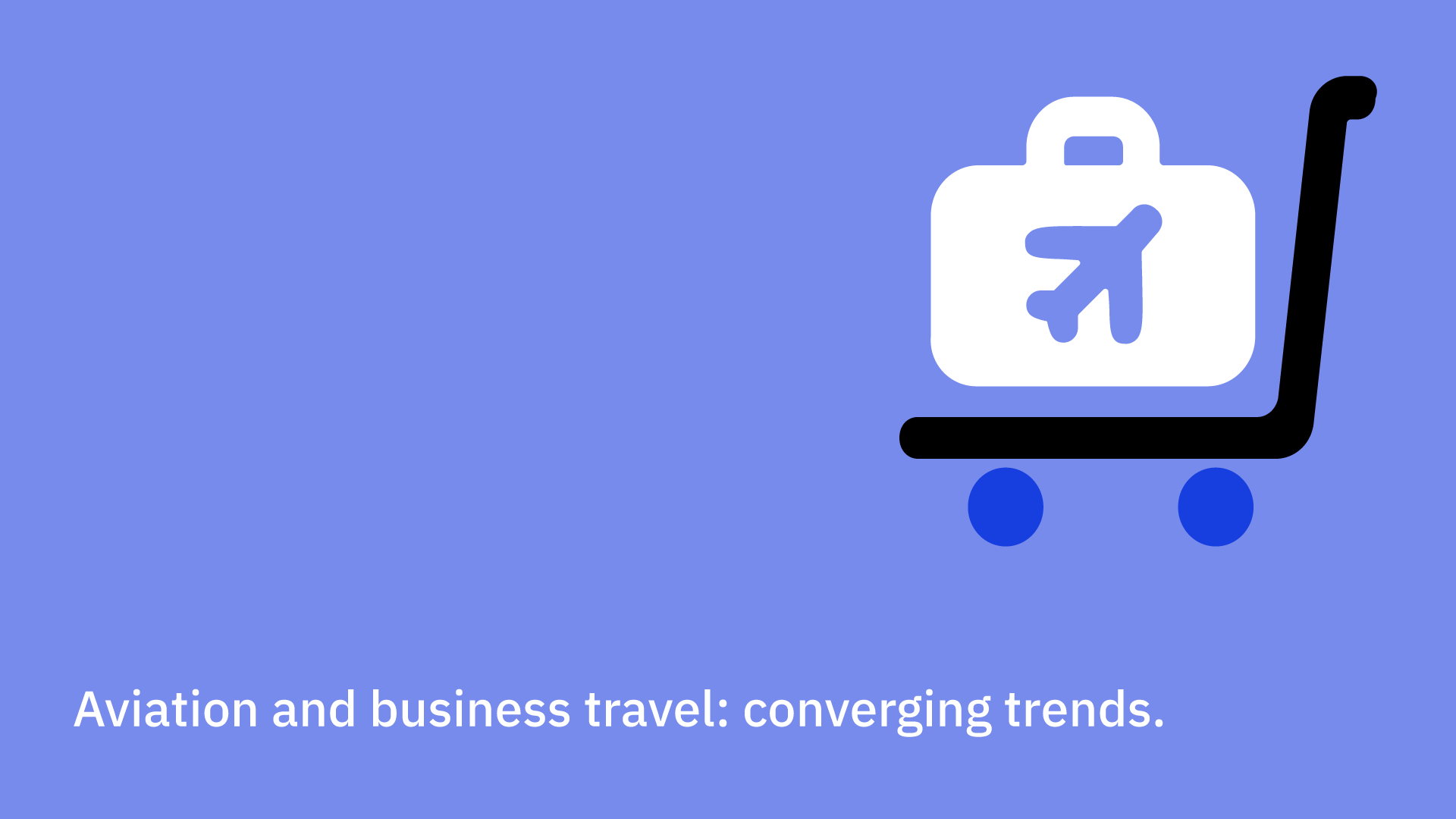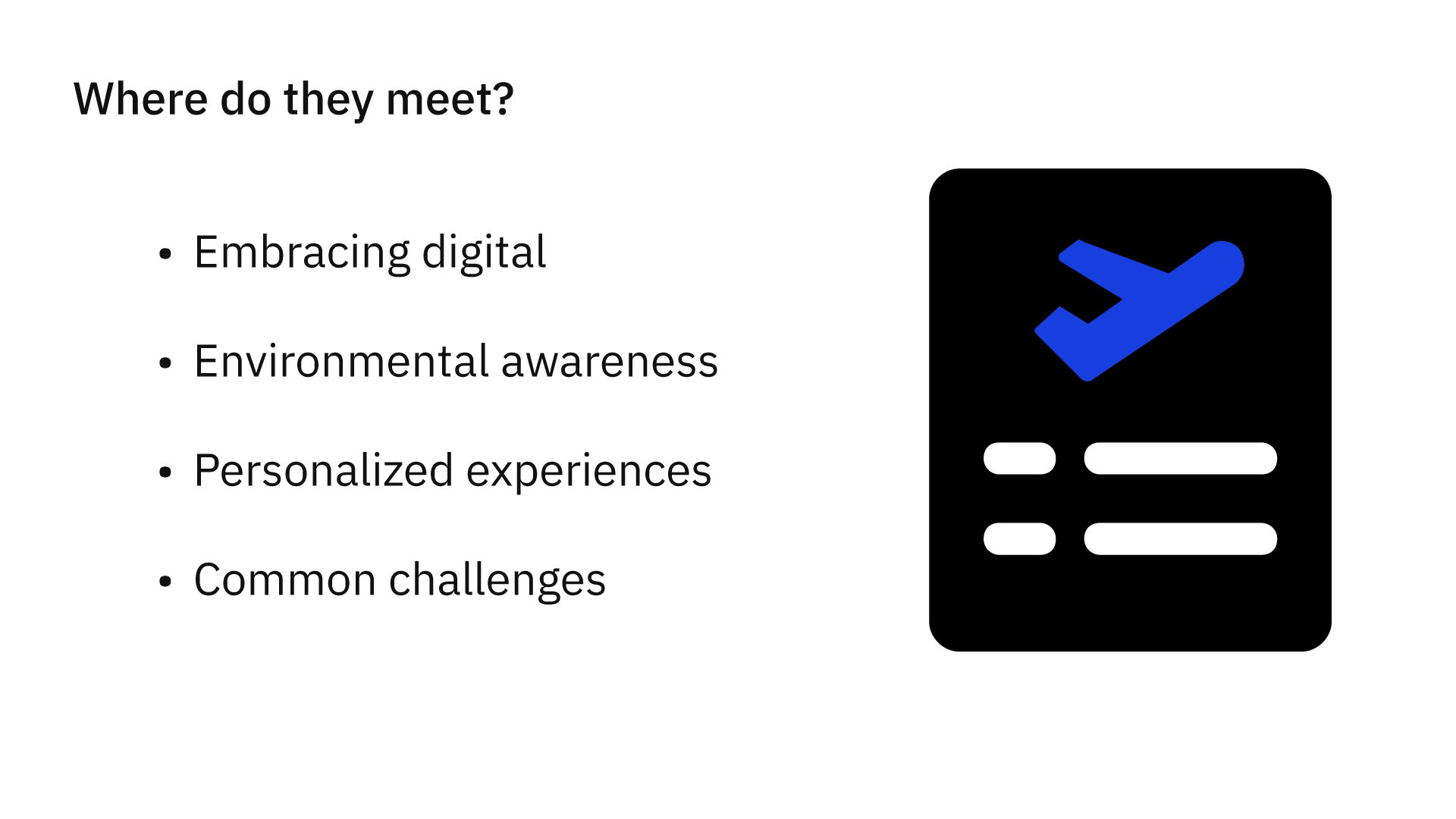
Aviation and business travel: converging trends.
Updated on February 4, 2025
Business travel and the aviation industry are deeply connected, with business travel being a major driver of aviation. Both industries are undergoing significant transformations, driven by technological advancements, evolving traveler expectations, and a growing emphasis on sustainability.
I attended The World Aviation Festival Europe and the GBTA Business Travel Conference Europe during the Autumn of 2024 and I wanted to share key trend similarities, supported by quotes from industry leaders:
Digital transformation.
Both sectors are embracing digital technologies to improve efficiency, enhance customer experience, and create new opportunities. This includes implementing AI-powered solutions, data analytics, and cloud-based platforms. Both are slowly implementing new technologies but this will speed up in 2025, with Airlines quickly leading the way with products and strategies to support Business and Leisure travelers, in comparison to Travel Management Companies.
- NDC technology: Airlines are increasingly adopting New Distribution Capability (NDC) to offer a wider range of fares and ancillary services directly to travelers, travel management companies, and other preferred Online Travel Agency (OTA) partners. There are additional services and products that are bought in addition to a seat such as buying more legroom, meals before takeoff, and choosing a preferred seat. These additions need extra visibility for agents to book and can take extra time as it’s not always a straightforward seat booking. Providing this connection between airlines and travel and leisure agencies is becoming a key strategy for Airlines. Many Travel Management Companies (TMCS) are adjusting to this new buying reality. Paul Dear, Regional Vice President - Supplier Services EMEA at SAP Concur (a Software as a Service company that provides travel and expense management services to businesses) agreed that this shift is happening by saying that "The shift to NDC continues to gain momentum". SAP Concur is a partner that provides this distribution because as he says, “it gives customers the flexibility of TMC, GDS, and over 700 partners to meet their needs."
- Digital customer experience: Airlines are striving to create a seamless and personalized digital experience for travelers and are using different strategies whether visual, biometric, or through their customer service center agents. Lufthansa is an airline that was the only airline that I view that gives a strong balance between human and digital. As Oliver Schmitt, SVP of Digital Customer Solutions & CEO of Digital Hangar at Lufthansa Group said, "Trusted human and seamless digital connections is the Lufthansa mantra." Within one talk at the World Aviation Festival that I attended, he emphasized the importance of understanding the traveler context and using data to provide an end-to-end perspective which I strongly agree with.
Data-driven insights: Both airlines and business travel programs are leveraging data to understand traveler behavior, predict demand, and make informed decisions. Jael Feito Penit, Manager User Experience, Design, CRO and Content at Iberia, highlights the importance of analyzing customer feedback to optimize the travel experience: "You need to understand customer behavior and gain the feedback and figure out what the story is behind the customer contacting you and analyze the feedback. Whether its confusion at the airport, the app or the website. This data can then be optimized to make data-driven decisions."

Sustainability.
Both industries recognize the importance of sustainability and are taking steps to reduce their environmental impact. This includes investing in sustainable aviation fuels, exploring new technologies, and promoting responsible travel policies and practices. GBTA Europe dedicated an entire day to educational sessions, workshops and panels to support the travel industry to adopt new strategies.
- SAF investment: Many airlines are looking at Sustainable Aviation Fuel as an approach to improving engine emissions, as well as offering tickets that support carbon offsetting programs, including upgrading their aircraft fleet. Carbon emission reporting is key to businesses as they have to submit CSRD Reports (Corporate Sustainability Reporting Directive) that clearly demonstrate the emissions that their travelers create next year. Marjan Rintel, CEO of KLM, emphasizes the Aviation industry's collaborative effort in developing SAF; "The main thing is how can we work together as an industry, with governments, with the EU to at least develop sustainable aviation fuel. To have more supply against reasonable prices so it's affordable as an industry."
- Digital sustainability: The World Aviation Festival and GBTA Europe highlighted the role of digital technologies in achieving sustainability goals. Both events gave a platform for industry leaders and suppliers to discuss and demo products that could be implemented to provide innovative ways to achieve net-zero emissions through digital solutions.
Personalization.
Airlines and business travel programs are focusing on delivering more personalized experiences to travelers. This includes using data to tailor services, offer personalized recommendations, and create unique travel journeys.
- Understanding traveler needs: Airlines are increasingly recognizing the need to understand and cater to the unique needs of different traveler segments. Marleen van de Pool, VP Customer Experience at KLM, stresses the importance of this approach and how its a key pillar to their corporate strategy as they ask themselves key questions to understand a company’s core DNA to then in turn help travelers with this in mind “We ask what are we, and we ask this throughout the company. Our people need to make a brand promise come alive and know what they need to deliver.”
- Gen Z expectations: The entire travel industry is adapting to the evolving expectations of Gen Z travelers, who value flexibility, personalization, and sustainability. Hyper-personalization is key to driving loyalty for companies, and it’s not just about offering bespoke options, it’s about providing unique experiences informed by data.
Collaboration.
Businesses, Aviation, and Business Travel organizations industries are fostering partnerships and collaborations to drive innovation and address common challenges.
- Ecosystem approach: Understanding the legacy technology and how it can work with new innovative tech disruptors and align with internal processes is a challenge. There has to be an emphasis on the need for a holistic approach to customer experience. A key to CX is journey mapping and some third-party companies and agencies can create this type of map for the industry. I believe that the travel industry needs to understand how the CX journey changes end-to-end due to traveler decisions and how they all collaborate with the tech and processes internally. For example, every traveler’s decision in a drop-down box creates 15 more data sets at the back end to make actions and decisions on. Having a trusted and experienced Digital CX partner as a consultant can speed up the innovations in the industry.
- Networking and partnerships: The World Aviation Festival served as a significant platform for networking and partnerships that were demonstrated across airlines, airports, and technology providers, engaging in future collaborations. GBTA Europe is equally a strong platform for networking, partnerships, and tech providers across corporate buyers, airlines, hotels, ground transport, payment companies, meeting and event planners, etc.
In summation.
As you can see, the trends in business travel and aviation are closely aligned. Both industries are transforming to meet the evolving needs of travelers and address global challenges. But by embracing digitalization, prioritizing sustainability, personalizing experiences, and fostering collaboration, these sectors are shaping the future of travel.
